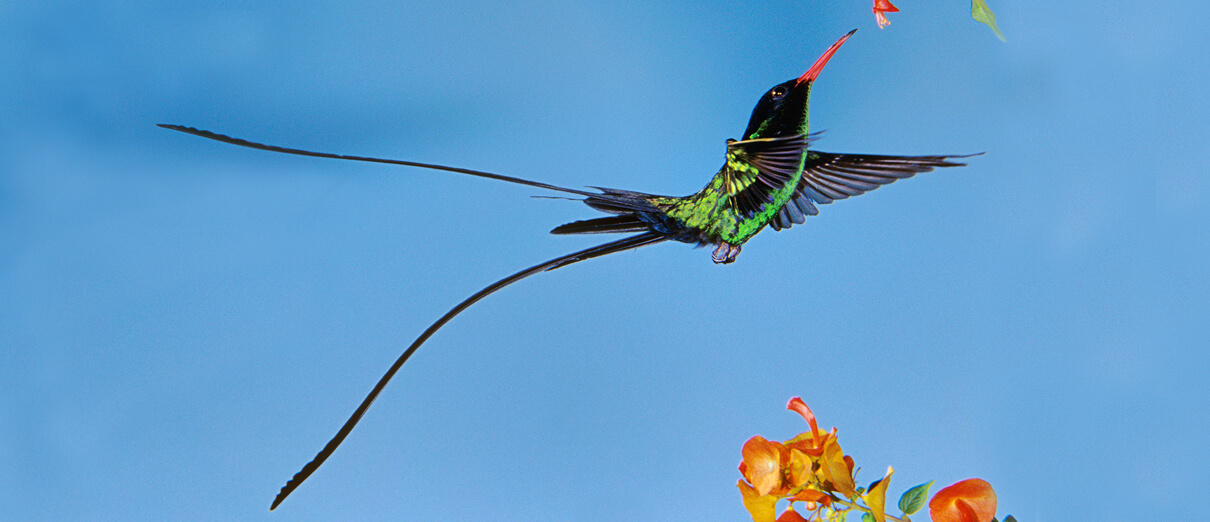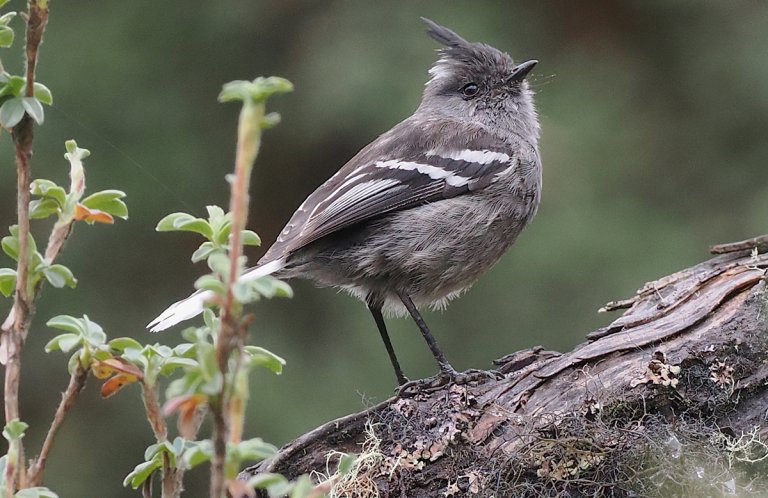
Streamertail range map by Cornell Lab of Ornithology
The striking Streamertail hummingbird is endemic to Jamaica, where it is the national bird, and known by many locals as the “doctor bird,” since the male's long, black tail feathers and black crest reminded people of the coattails and top hat of an old-fashioned doctor. Other local names include scissors-tail or swallow-tail hummingbird (not to be confused with the Swallow-tailed Hummingbird of South America).
The Arawak, the original inhabitants of Jamaica, called the Streamertail the “god bird,” since they believed that this hummingbird was the reincarnation of a dead soul, with magical powers.
For Your Eyes Only
British author Ian Fleming introduces the Streamertail to readers in the first line of his James Bond short story For Your Eyes Only. "The most beautiful bird in Jamaica, and some say the most beautiful bird in the world, is the streamer-tail or doctor humming-bird." Fleming vacationed on Jamaica for several months every year during the 1950s and early 1960s, and no doubt was quite familiar with this eye-catching creature.
When starting to write his now-world-famous stories, Fleming struggled to come up with a name for his dashing main character, then was inspired by the author of one of his favorite books, the field guide Birds of the West Indies — by the American ornithologist James Bond.
Separate Streamertails?
There are two populations of Streamertail: the "Red-billed," which occurs on most of the island, and the "Black-billed," restricted to the island's east end. Some authorities consider the two to be separate species based on the differences in bill color, size, voice, and display. The two populations interbreed in the John Crow Mountains.
Streamertail calls include a loud metallic ting or teet. Like other hummingbirds, including the Ruby-throated Hummingbird and Calliope Hummingbird, the male Streamertail produces a distinctive whirring sound in flight, caused by air passing over the bird's feathers during its rapid wing beats.
Listen here:
(Audio: Richard C. Hoyer, XC48118. Accessible at http://www.xeno-canto.org/48118)
Of Tails and Turf
The Streamertail feeds on nectar from a variety of native and introduced flowering trees, herbs, shrubs, and epiphytes. It also visits hummingbird feeders, bird baths, and water features. A Streamertail will also consume small spiders and insects — important sources of protein, particularly sought by the female during nesting season to ensure proper development of her young. Invertebrates are caught in flight (by hawking), snatched off leaves or branches, or plucked from spider webs.
Male Streamertails establish feeding territories, where they chase away other males and even large insects such as bumblebees and hawk moths that try to feed there.
Showing Off Streamers
Male Streamertails grow long, specialized tail feathers with scalloped and fluted edges. Like the Marvelous Spatuletail, the male Streamertail puts his long tail to good use during courtship, waving his black "streamers" around in displays aimed at attracting females. Males with long, symmetrical tails are better fliers than birds with shorter, less shapely streamers, so are fitter, and thus have a better chance at reproductive success.

Streamertail by Rolf Nussbaumer Photography
Outside of courtship and mating, the Streamertail is solitary — a trait shared by most other hummingbirds. One or more females choose a prospective male's territory, but after mating, they build the tiny, cup-shaped nest, brood their clutch (usually two eggs), and raise their young alone. Thanks to Jamaica's tropical climate, breeding occurs throughout the year, and a female Streamertail can raise up to three broods annually.
Common, but on Just One Island
The Streamertail was a popular target of the wild bird trade until the 1960s. Today, it is protected. Populations are widespread at all elevations on Jamaica, and since the Streamertail readily occupies man-made habitats, habitat loss is not a threat.
ABC has supported the Jamaica Conservation and Development Trust in its efforts to conserve the island's endemic birds in the Blue and John Crow Mountains National Park. This work benefits the Streamertail and many other bird species, such as the Jamaican Blackbird, Blue Mountain Vireo, and Yellow-billed Parrot, plus wintering migrants including the Ovenbird, Black-throated Blue Warbler, and Prairie Warbler.
Donate to support ABC's conservation mission!



















































